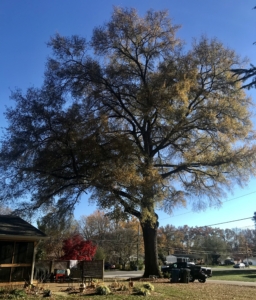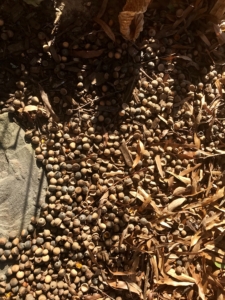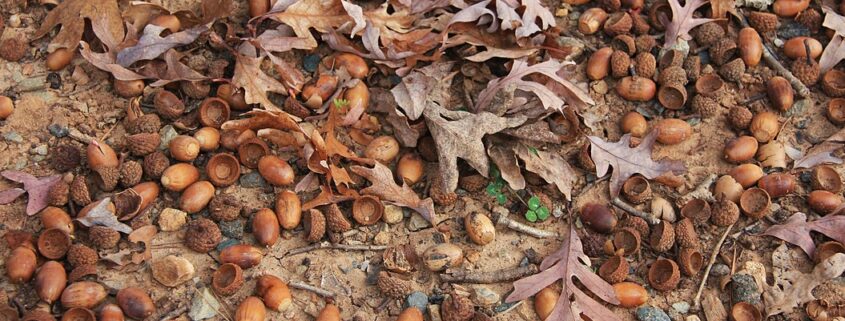Mast Years – Not Just for Pigs
Recently, while waiting for busses filled with 3rd graders to arrive for a school program at Huntley Meadows, the conversation of idle interpreters turned to the insane number of acorns we are finding and hearing in our yards this year. By hearing, I mean pelting like a hailstorm on our roofs, decks, cars, and metal grills even in a gentle breeze. We agreed that this is indeed a mast year in our area for some oaks, but we did not have time to fully discuss what causes masting or why it is called ‘masting’ because the busses arrived. So, after the 3rd graders were fully educated on the benefits of Wetlands and why that snake was eating a frog feet-first, I went home and did a little research…
The term masting comes from the ancient English word ‘mæst’. A term used to refer to years when forest acorn production increased significantly, and pig farmers were allowed to drive their stock into the forest to fatten them up.
I love etymology; today the term ‘mast’ is a general term for when plants (predominantly trees) flower together en masse every few years, producing large amounts of seeds. Most plants in Virginia flower and seed each year but these are mostly average flowering events. Some years see larger than normal flower and seed events.

Giant willow oak in my yard – photo Jerry Nissley
I recall the copious amount of catkins produced last spring and the dense pollen that wafted from the giant willow oak in my yard. As the wind blew, I saw literal clouds of pollen in the air that painted my deck (verily my house) yellow. This synchronized mass flowering and seed production occurs in populations of plants like oak and beech forests, not individual plants alone. All my neighbors have willow oaks.
A single willow oak produces both male flowers (in the form of catkins) and small cone flowers (female flowers), meaning that the trees are monoecious. Willow Oaks have male flowers on one part of their branch and female flowers on another part of the same branch.
Once the stamens have released their pollen into the air, the entire catkin will fall from the tree. Maybe you’ve seen thousands of such spent catkins littering a sidewalk beneath a willow oak early in the spring. On a flowering oak twig you have to look closely to see the female flowers — the future acorns.
These intermittent pulses of food production drive ecosystem-level functions and forest dynamics. The difference between a mast seeding year and a non-mast seeding year can be thousands of acorns, hickory nuts, or beech nuts. Mast seeding predominantly occurs in wind-pollinated tree species but has also been observed in grasses and dipterocarps (plants in tropical forest environments), according to Wikipedia.

My entire backyard under the tree canopy – photo Jerry Nissley
Hypotheses for mast seeding can be broadly assigned to three categories: economies of scale, resource matching, and proximate cues (i.e. weather). The key common feature is that the plants derive some benefit from making occasional large seeding efforts rather than regular smaller ones. It was also noted in our idle conversation that a mast may occur during a dry season, in an attempt by the trees to shed seeds that are taking away resources needed by the tree to simply survive the drought. In this case fewer of the seeds would be viable but ultimately also a benefit because it helps the tree survive. The two most common ways plants achieve success are by wind pollination and predator satiation. Large mass flowering will increase the chances of successful wind pollination. Predator satiation is when plant populations provide a glut of seeds every few years to make it much harder for consumers of the seed (birds and mammals) to eat them all – ensuring some seeds will remain available for new plants to grow. Of course, this glut of available food will also contribute to an increase in the number of consumers next season … and so it goes.
Everything is connected – yes?



